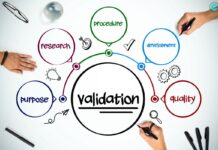
In the fast-paced world of software development, achieving optimal data agility is crucial for ensuring the success of projects. The ability to quickly and efficiently test applications in diverse and realistic environments is a key factor in delivering high-quality software. In this guide, we will explore the concept of data agility and discuss strategies for creating optimal test environments.
Understanding Data Agility
Data agility is a critical concept in today’s fast-paced and data-driven business environment. It refers to an organization’s ability to efficiently and effectively manage, process, and utilize its data to gain a competitive advantage, make informed decisions, and adapt to changing circumstances swiftly. Achieving data agility is crucial for businesses looking to innovate, respond to market dynamics, and meet the evolving needs of their customers.
Key Components of Data Agility

Data Accessibility:
Ensure that relevant stakeholders have timely access to the data they need for decision-making and operational processes. Utilize modern data architectures and technologies to enable seamless and real-time data access.
Data Quality:
Maintain high standards of data quality to ensure accuracy, reliability, and consistency. Implement data quality management practices, including data profiling, cleansing, and validation.
Data Integration:
Integrate data from various sources to create a unified and comprehensive view. Employ robust data integration tools and platforms to streamline the process of combining diverse datasets.
Data Security and Compliance:
Prioritize data security to safeguard sensitive information from unauthorized access or breaches. Ensure compliance with data protection regulations and industry standards to build trust with customers and avoid legal ramifications.
Data Governance:
Establish clear data governance policies and practices to define roles, responsibilities, and processes for managing data assets. Implement data governance frameworks that promote accountability, transparency, and data stewardship.
Data Analytics and Insights:
Leverage advanced analytics and business intelligence tools to extract valuable insights from data. Enable data-driven decision-making by empowering teams with the tools and skills needed to interpret and act upon data.
Scalability and Flexibility:
Design data architectures that can scale with growing data volumes and evolving business requirements. Embrace cloud-based solutions and technologies that offer flexibility and scalability in managing data infrastructure.
Agile Data Management Practices:
Adopt agile methodologies in data management processes to respond quickly to changing business needs. Implement iterative development and testing cycles to refine and improve data processes continuously.
Challenges in Test Environments

Creating and maintaining optimal test environments poses several challenges for organizations. These challenges include:
- Data Privacy and Compliance: With the increasing focus on data privacy regulations, organizations must ensure that their test environments adhere to stringent compliance standards. Safeguarding sensitive information while still providing realistic test scenarios is a delicate balance.
- Data Volume and Variety: Test environments need to mimic real-world conditions, which often involve handling vast amounts of diverse data. Managing data volume, variety, and complexity in test environments can be a significant hurdle.
- Data Refresh and Masking: Ensuring data integrity requires regular updates of test environments. However, refreshing data without compromising its validity and relevance is a complex process. Additionally, data masking becomes crucial to protect sensitive information during testing.
- Resource Constraints: Limited resources, including time, personnel, and infrastructure, can hinder the creation and maintenance of effective test environments. Organizations must optimize their resources to achieve maximum efficiency.
A Guide to Optimal Test Environments
To master data agility, development teams must focus on creating optimal test environments. This involves replicating the production environment as closely as possible, including the variety and volume of data that applications are expected to handle. Several key strategies can contribute to achieving this goal:
- Data Profiling and Classification: Begin by understanding your data. Profile and classify the data to identify sensitive information and ensure compliance with privacy regulations. This step forms the foundation for effective data masking and privacy measures.
- Automated Data Provisioning: Invest in automated tools and processes for provisioning test data. Automation accelerates the deployment of test environments, reducing manual errors and ensuring consistency across different testing phases.
- Data Masking and Anonymization: Protecting sensitive information is paramount in test environments. Data masking and anonymization techniques ensure that personally identifiable information (PII) is obfuscated, allowing realistic testing without compromising privacy or security. This involves replacing or encrypting sensitive data, allowing teams to work with realistic datasets without exposing confidential information.
- Dynamic Data Generation: Move beyond static test datasets by incorporating dynamic data generation techniques. This enables teams to simulate a wide range of scenarios, facilitating more comprehensive testing and validation.
- Containerization and Virtualization: Leverage containerization and virtualization technologies to create lightweight, scalable, and portable test environments. This approach enhances resource utilization and accelerates the setup of diverse testing scenarios.
- Continuous Monitoring and Validation: Establish a continuous monitoring system to track the health and performance of test environments. Regularly validate data accuracy, integrity, and compliance to ensure that the test environments remain reliable and effective.
- Collaboration and Communication: Foster collaboration between development, testing, and operations teams. Effective communication and collaboration are essential for aligning the goals of different departments and streamlining the test environment management process.
- Versioning Test Data: Maintaining different versions of test data is essential for regression testing and ensuring that applications function correctly across various data sets. This practice enables developers to identify and address issues related to data changes over time.
Synthetic Data Generation Tools

One revolutionary approach to achieving optimal test environments is the utilization of synthetic data generation tools. These tools enable the creation of artificial yet realistic datasets that mimic the characteristics of actual data. Here are some key benefits of incorporating synthetic data into your testing strategy:
- Data Diversity: Synthetic data generation tools allow for the creation of diverse datasets, covering a wide range of scenarios. This diversity is essential for testing applications in various conditions and ensuring robust performance.
- Privacy Compliance: With increasing concerns about data privacy, synthetic data provides a solution by eliminating the need to use real customer data in testing. This ensures compliance with data protection regulations while still maintaining the realism required for effective testing.
- Speed and Efficiency: Synthetic data can be generated quickly, reducing the time spent on waiting for realistic datasets. This speed enhances the overall efficiency of the testing process, allowing development teams to iterate rapidly.
Conclusion
In the era of digital transformation, mastering data agility is not an option—it’s a necessity for survival. Organizations must prioritize the creation and maintenance of optimal test environments to ensure the effectiveness of their software development and testing processes. By embracing automation, dynamic data generation, and robust security measures, businesses can navigate the complexities of test environment management and unlock the full potential of their data, driving innovation and success in today’s competitive landscape.








